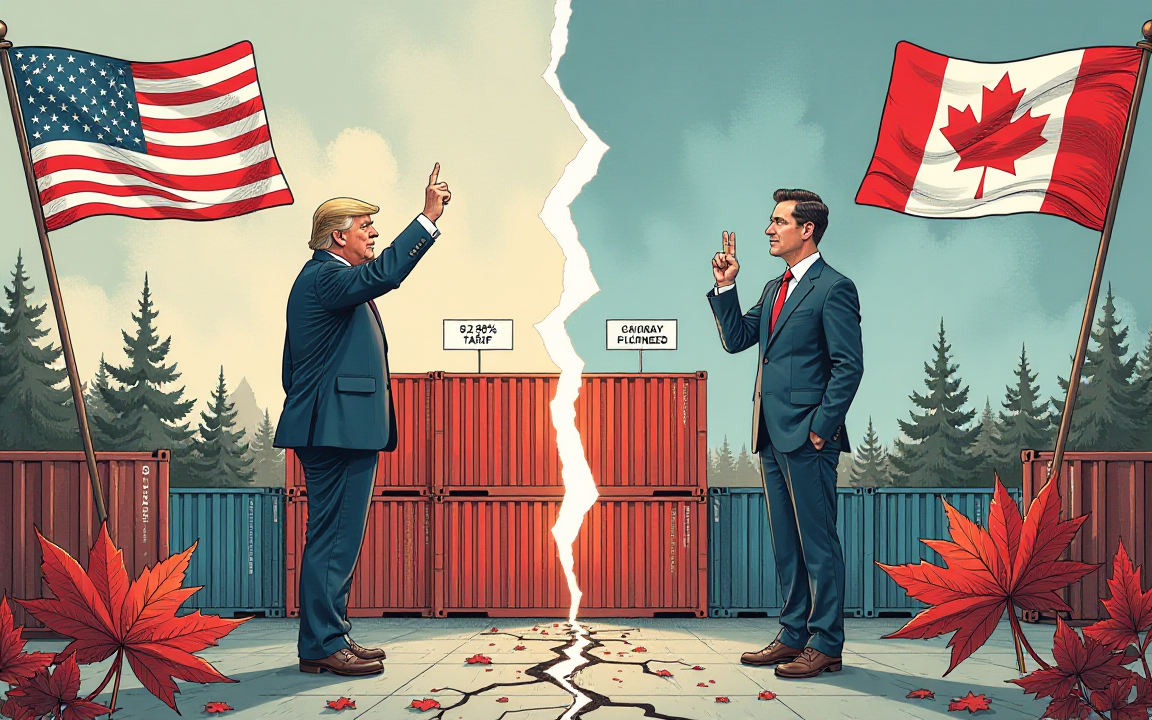The Canadian government faces a mounting economic and political challenge after the US increased tariffs on Canadian products to 35%, marking a sharp divergence in how Washington is handling trade relations with its North American neighbors.
While Mexico has been granted a 90-day reprieve from similar tariff hikes, Canada finds itself on the receiving end of escalated trade penalties — a move the White House attributes to fentanyl trafficking and Canada’s earlier retaliatory actions.
Tariff escalation marks break from North American unity
Until recently, Canada and Mexico were treated similarly in US trade policy under the United States-Mexico-Canada Agreement (USMCA), each subject to a 25% base tariff but benefiting from significant exemptions.
That changed on Thursday, when the Trump administration spared Mexico from tariff increases but levied a 35% rate on Canadian goods.
According to the White House, Canada’s higher tariff rate is linked to its alleged role in fentanyl trafficking and its use of counter-tariffs.
The statement drew criticism, given that US Customs and Border Protection data shows Mexico as a much larger source of fentanyl shipments.
The new tariffs place Prime Minister Mark Carney’s administration in a difficult position.
Elected on a platform of standing firm against US trade aggression, Carney now faces pressure to respond.
However, prior retaliatory efforts appear to have worsened the situation, rather than deterred further escalation.
Canada’s limited scope for retaliation
Canada’s earlier countermeasures under former Prime Minister Justin Trudeau included a 25% levy on about C$30 billion in US imports and matching US tariffs on steel, aluminum, and automobiles.
Yet, these moves failed to prevent further increases.
Carney has since taken a more measured approach, watering down Canada’s counter-tariffs with various exemptions on manufacturing inputs, public health goods, and vehicles produced in Canadian plants by companies such as GM and Honda.
Experts like David Collins of City St George’s University argue that Carney’s restraint reflects an economic reality: retaliation often hurts the imposing country as much as the target.
The Canadian government’s primary concern remains preserving the USMCA carve-out that reduces the effective US tariff rate on Canadian goods to approximately 6.3%, according to Bank of Nova Scotia economists.
Diplomacy vs. retaliation: a strategic crossroads
While Canadian officials, including Trade Minister Dominic LeBlanc, continue discussions with US counterparts, no immediate resolution has emerged.
A statement from Carney’s office expressed disappointment but avoided mentioning further retaliation.
Observers note that Mexico’s contrasting approach — avoiding counter-tariffs entirely — appears to have earned it better treatment.
Mexican President Claudia Sheinbaum has maintained high approval ratings and emphasized mutual respect in dealings with Trump.
Economists remain wary of the long-term effects on Canada’s economy.
While USMCA exemptions offer some protection, sector-specific tariffs on steel, aluminum, and autos may weigh on growth.
CIBC’s Avery Shenfeld warned investors that Canada’s perceived immunity may be overstated and that the risk of further disruptions could deter capital investment and erode business confidence.
With trade talks ongoing and no firm agreement in sight, Canada must balance political expectations with economic pragmatism as it navigates a shifting trade landscape shaped by volatile US policy.
The post Canada ponders over retaliation costs against US tariffs appeared first on Invezz

